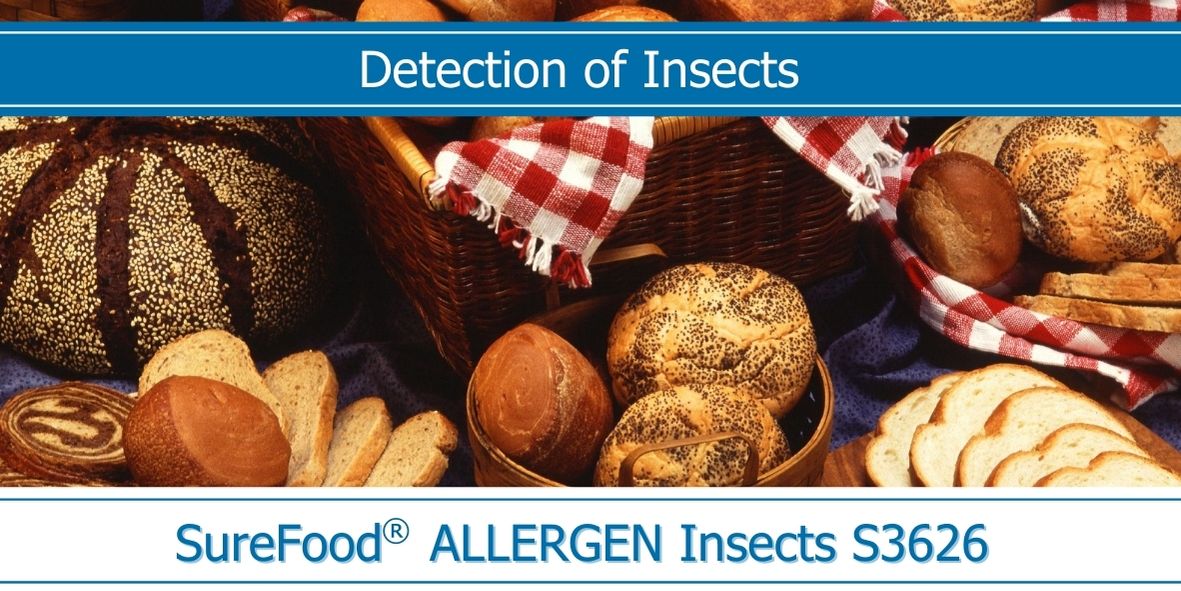The EU Commission has approved two additional forms of edible insects for use in food. The new EU Regulation 2023/5 authorizes partially defatted powder
of Acheta domesticus (domestic cricket) and EU Regulation 2023/58 authorizes the use of the frozen, pasty, dried and powdered larvae of Alphitobius diaperinus
(grain mold beetle).
For which products is the house grill approved?
The powder of the Acheta domesticus is approved for a variety of products:
- Multigrain bread and roll
- Cereal bars
- Dry premixes for bakery products
- Cookies
- Dry filled and unfilled pasta products
- Sauces
- Dishes based on legumes and vegetables
- Processed potato products
- Pizza
- Pasta products
- Whey powder
- Meat analogues
- Soups and soup concentrates or powders
- Cornmeal based snacks
- Beer-like beverages
- Chocolate products
- Nuts and oilseeds
- Snacks other than chips
- Meat preparations
In which products may the grain mold beetle be used?
- Cereal bars
- Bread and buns
- Processed grains
- Breakfast cereals
- Porridge
- Dry premixes for bakery products
- Dried pasta products
- Stuffed pasta products
- Whey powder
- Soups
- Cereal and pasta based dishes
- Noodles
- Snacks other than chips
Insects are considered a novel food
Many consumers worry that the insects will go unnoticed into their pizza, pasta or cereal bars. However, this concern can be dispelled very easily. Insects fall under the Novel Food Regulation for novel foods that have not previously been used for human consumption. In order to protect
consumers from possible risks, novel foods are subjected to a comprehensive health assessment as part of the approval process.
This test is carried out by the European Food Safety Authority (EFSA). The EFSA currently rates the consumption of these insects as harmless to health.
In principle, however, the insects must be clearly identified on the list of ingredients, but not specifically highlighted.
Why eat insects?
From a nutritional perspective, insects are considered a high-quality source of protein compared to meat and fish. They are therefore being discussed
as a possible alternative to meat or as protein-rich feed for livestock. Furthermore, many insects are rich in unsaturated fatty acids (comparable to fish)
and fiber. They provide a variety of micronutrients such as copper, iron, magnesium, manganese, phosphorus, selenium and zinc. From an environmental
point of view, eating insects would also be advisable, since significantly less food is required to achieve the same weight gain. For example, domestic crickets
require six times less feed than cattle, four times less than sheep, and two times less than pigs and broilers to produce the same amount of protein.
(according to FAO UN Organization for Food and Agriculture). In addition, they emit far fewer greenhouse gases and the water requirement is reduced
compared to conventional animal husbandry. The risk of insect transmission of zoonotic pathogens such as BSE or H1N1 (bird flu) is very low.
Is eating insects a health risk?
According to the BfR (Federal Institute for Risk Assessment), however, there is still a considerable need for research with regard to health impairments for consumers.
Two research projects deal with the topic of insects. The three-year ContamInsect project investigates the extent to which insects are contaminated with undesirable
substances such as dioxins, polychlorinated biphenyls, polycyclic aromatic hydrocarbons or mold toxins such as aflatoxins.
Are insects food allergens?
The joint research project Allergen-Pro deals with the possible allergenicity of insects. The aim is to develop suitable and reproducible methods for detecting insect
components in food. There is an increased risk of cross-reactions from insects, especially with arthropods (e.g. crustaceans and house dust mites) due to homologies
(matches) of different proteins such as tropomyosin and arginine kinase. There is currently no special labeling requirement for insects in food, as there is for allergens
in accordance with EU Regulation 1169/2011. In the immediate vicinity of the list of ingredients, however, there must be a note that “this ingredient can trigger allergic
reactions in consumers who are known to be allergic to crustaceans and products made from them and to house dust mites.”
PCR detection of insects
The SureFood® ALLERGEN Insects PCR Assay developed by CONGEN detects all currently approved insect species (Insecta) very sensitively and therefore offers the
greatest possible safety for the allergic consumer. The simple duplex test can be used on all common commercially available thermal cyclers. The real-time PCR has a
detection limit of ≤ 1 mg insects / kg food.
In summary, from my point of view, insects cannot be rated as safe food because the risks and side effects are still largely unexplored. The results of the current
research projects are to be awaited here. An allergenic risk can be assumed in any case due to the homology of the protein structures, which is why inclusion in
the list of allergens that must be labeled should be considered.



